The Most Powerful Families in America From Centuries

According to Forbes, the most powerful families in the United States, are 45 with over $10 billion fortunes. With a $267 billion fortune, the descendants of Sam Walton—the founder of Walmart—are wealthier than Elon Musk. Among the families included are those of Mars, Marriott, Hearst, Koch, Lauder, Pritzker, and Rockefeller.
Most Powerful Families
Certain American families have made permanent imprints in every corner of American society, from the corridors of political authority to the boardrooms of corporate America. Through their multi-faceted influence, these families have guided America’s trajectory. This in-depth analysis dives into fifteen of the most significant families, illuminating their legacies and essential people.
-
The Kennedy Dynasty Members
American politics, public service, entertainment, and business have all been influenced by the Kennedy family, also known as Ó Cinnéide in Irish. He served in the Massachusetts State House until 1895.
From 1947, when John F. Kennedy, grandson of P. J., was elected to the Massachusetts congressional seat, until 2011, when Patrick J. Kennedy II, nephew of John, retired as a representative from Rhode Island, at least one member of the Kennedy family held an elective office at the federal level.
Among the nine children born to Joseph P. Kennedy Sr. and Rose Fitzgerald Kennedy were long-serving senator Ted Kennedy, former U.S. Attorney General Robert F. Kennedy, and former president John F. Kennedy. Robert F. Kennedy also held the positions of attorney general and senator.
Among the other direct descendants are members of the United States Congress, two ambassadors, one special envoy, a lieutenant governor, three state legislators (including one who was a member of Congress), and a mayor.
The Special Olympics and the National Institute of Child Health and Human Development, both National Institutes of Health branches, were mainly founded by Joseph and Rose’s daughter, Eunice. Joseph and Rose Kennedy’s other progeny have gone on to prominent careers in law, literature, and disability rights advocacy.
The Past
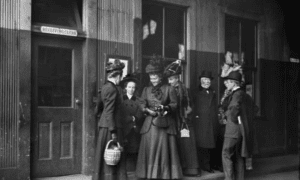

John F. Kennedy was the patriarch of the Kennedy family of politicians.
In JFK’s Irish O’Kennedy Ancestors, genealogist Brian Kennedy states that the Kennedys, prominent Americans, descended from an Irish clan known as Ó Cinnéide Fionn. This clan was one of three Gaelic Ó Cinnéide families that governed the Kingdom of Ormond in Ireland.
Diarmaid Ó Cinnéide Fionn, an ancestor of the family, acquired Knigh Castle in 1546. The castle was situated near the present-day Puckane in County Tipperary. They relocated to Dunganstown, New Ross, County Wexford, in 1740 after being supplanted by the New English order in the Kingdom of Ireland. Born there was Patrick Kennedy.
Travelling from Ireland to East Boston in 1849, Patrick Kennedy (1823–1858) and Bridget Murphy (1824–1888) set sail. Patrick had five children with Bridget while working as a cooper in East Boston. Patrick Joseph “P. J.” Kennedy, the youngest of the Kennedy brothers, was a successful businessman and state legislator for Massachusetts from 1884 until 1895.
Four children were born to P. J. and Mary Augusta Hickey. One of its earliest members was the financial magnate Joseph Patrick “Joe” Kennedy Sr.,] who built his fortune in banking and securities trading and then invested in the film industry and real estate. In addition to owning the Merchandise Mart in Chicago, he established Somerset Importers.
Rose Fitzgerald, the eldest daughter of John F. “Honey Fitz” Fitzgerald—a six-term mayor of Boston and six-term U.S. House of Representatives member—was married to Joseph Sr. in 1914.
John (named Jack) (1917–1963), Rose Marie (called Rosemary) (1918–2005), Kathleen (called Kick) (1920–1948), Joseph Jr. (1915–1944), Patricia (1924–2006), Robert (named Bobby) (1925–1968), Jean (1928–2020), and Edward (named Ted) (1932–2009) were the couple’s nine children.
Franklin D. Roosevelt appointed Joseph Sr. to several positions, including the first chairman of the SEC, chairman of the Maritime Commission, and ambassador to the UK from 1938 to 1940.
His tenure on President Harry Truman’s appointed Hoover Commission (also known as the “Commission on Organization of the Executive Branch of the Government”) spanned 1947–1949 and was tasked with making recommendations for administrative reforms within the United States government.
Pope Pius XII gave Rose Fitzgerald Kennedy the title of Papal Countess of the Holy Roman Church in 1951 as a reward for her “exemplary motherhood and many charitable works.”
Public Service That Never Ends
At the Kennedy Compound in 1931, Joseph P. Kennedy Sr. and Rose Kennedy were joined by their children.
Members of the Kennedy family have worked for the Democratic Party or held Cabinet positions in Democratic administrations; every Kennedy elected to public office has served as a Democrat. Numerous family members have contributed substantially to the John F. Kennedy School of Government at Harvard University, and several have attended Harvard University.
Joseph Sr. had high hopes for his eldest son, Joseph Jr., who he believed would enter politics and one day become president. Following his election as a delegate from Massachusetts to the 1940 DNC, Joseph Jr. enrolled in the United States Navy upon America’s entry into WWII.
The aircraft he was piloting went boom in 1944, killing him instantly. After John, who had written a book (Why England Slept) and done some reporting for Hearst Newspapers, was considered for a future in journalism, Joseph Sr.’s ambition for the family to become politically and administratively active shifted its focus to him.
John was a member of Congress from 1947 to 1953, representing Massachusetts’s 11th congressional district, and then a senator from 1953 to 1960 once his time in the Navy ended.
John barely beat Richard Nixon, the Republican candidate for president in 1960.
Robert was attorney general under John’s administration, Sargent Shriver was director of the newly formed Peace Corps, and Ted was elected to the United States Senate from Massachusetts, where he held his brother’s seat until 2009 when Ted passed away.
Prominent achievements of the Kennedy administration encompass several initiatives,
- such as the Alliance for Progress with Latin America,
- the Peace Corps,
- the Nuclear Test Ban Treaty of 1963,
- the 24th Amendment,
- which abolished the poll tax,
- the continuation of the Apollo spaceflight program aiming to land a man on the moon, and the introduction of the Civil Rights Act of 1964 to Congress,
- which was subsequently signed into law by Lyndon B. Johnson, Kennedy’s successor.
Throughout and after Kennedy’s administration, the family received extensive media attention.
While his son, Patrick J., represented Rhode Island’s 1st congressional district (1995–2011), and nephew, Joseph P. II, represented Massachusetts’s 8th congressional district (1987–1999), Ted was serving in the Senate with his brother, Robert (1965–1968). Representing Massachusetts in the United States House of Representatives was Joseph P. Kennedy III, elected in November 2012.
His family tree includes the late Sen. Robert F. Kennedy, his grandfather, and the son of Joseph P. Kennedy II. Joseph P. III became the first Kennedy ever to lose an election in Massachusetts when incumbent Ed Markey defeated him in the 2020 U.S. Senate primary.
During the 2020s, three members of the Kennedy family held the position of ambassador or envoy for the United States. U.S. ambassador to Austria to be named by President Biden in 2021 is Victoria Reggie Kennedy, Ted Kennedy’s second wife.
Before President Biden’s appointment as U.S. ambassador to Australia in 2022, Caroline Kennedy—the daughter of President Kennedy—served as U.S. ambassador to Japan during the Obama administration. Joseph P. Kennedy III was appointed U.S. special envoy to Northern Ireland by President Biden in the same year.
An anti-vaccine activist and environmental lawyer named Robert F. Kennedy Jr. first sought the Democratic nomination for president in 2024 in April 2023 before switching to the independent ticket in October 2023.
List of the Top 10 U.S. Packaging Design Agencies
2: The Rockefellers
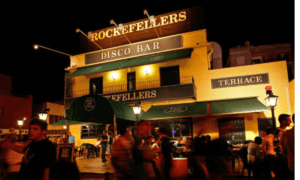

An American industrial, political, and financial dynasty, the Rockefellers controlled one of the world’s most enormous fortunes. American brothers John D. and William A. Rockefeller Jr. amassed a fortune in the late 19th and early 20th centuries through their holdings in Standard Oil, the forerunner of ExxonMobil and Chevron Corporation, among other companies in the petroleum business.
Chase Manhattan Bank was a long-standing associate and holding of the family. By 1987, the Rockefellers were regarded as one of the most influential families in U.S. history. Originally from Rhineland, Germany, the Rockefeller family emigrated to the Americas in the early 18th century. John D. Rockefeller and William A. Rockefeller Jr. are descended from Scots-Irish people through Eliza Davison, who had family roots in Middlesex County, New Jersey.
Background
The Rockefeller family tree begins in Neuwied in the early 17th century, in the Rhineland region of Germany. Johann Peter Rockefeller (1681–1763) left the Rhineland for Philadelphia, in the Province of Pennsylvania, about 1723, and the American branch of the family is descended from him. While in the United States, he acquired plantations and land in Somerville and Amwell, New Jersey.
Born into a Protestant household in Granger, New York, industrialist William A. Rockefeller Sr. was among the earliest members of the Rockefeller family to settle in New York. His first wife, Eliza Davison, was the daughter of a Scots-Irish farmer.
He had six children with her. The two sons who became oil tycoons and co-founders of Standard Oil, John D. and William A. Rockefeller Jr., were the most notable. A devoted Northern Baptist, John D. Rockefeller (termed “Senior” instead of his son, “Junior”) endowed numerous organisations with a solid theological foundation. Although most Rockefellers were Baptists, a few Episcopalians were among them.
Riches The Brothers Rockefeller
- Rockefeller, John D. Sr.
- Rockefeller, Jr., William A.
This is the first time anyone has ever been able to pin down the exact amount of the family’s fortune, including all their assets and investments and each member’s wealth. No one can access the family archives’ records dealing with the family’s wealth or any of its members.
The male heirs to the throne have always had unquestioned authority over the family’s fortune via the family office. Strong-willed wives who impacted their husbands’ actions, like the iconic Abby Aldrich Rockefeller, who was married to John D. Rockefeller Jr., were never granted any share of the family money and instead got allowances.
Both the 1934 family trust and the 1952 trust, which matured at the death of the fourth generation, are managed by Chase Bank, the corporate successor to Chase Manhattan Bank. These trusts contain the majority of the wealth and are set to mature.
In addition to the family’s substantial real estate holdings, these trusts have included shares in the firms that would eventually replace Standard Oil and other diverse interests. The trust committee is in charge of their administration.
The family’s investments are managed by professional money managers supervising the primary holding company, Rockefeller Financial Services. The family’s ownership of the Rockefeller Center has changed. David Rockefeller Jr. is both the patriarch and current chairman of the board.
There were five primary components in 1992:
The Rockefeller family owns and operates several businesses, including Rockefeller & Co., which manages the family’s wealth and some university endowments; Venrock Associates, which invests in Silicon Valley startups, including Apple Computer, Rockefeller Trust Company, Rockefeller Insurance Company, and Acadia Risk Management.
Politics
Since his passing in 2017, prominent financier David Rockefeller Sr. was the family’s patriarch. David Sr. was instrumental in having a statute that limited Chase Manhattan Bank’s operations to the city of New York repealed in 1960, while his brother Nelson Rockefeller was the state’s governor.
On two separate occasions, President Richard M. Nixon invited David Sr. to serve as Treasury secretary, but he turned it down. In 1979, he utilised his extensive network of influential people to arrange for the medical treatment of Mohammad Reza Shah of Iran, who was in terrible health after being toppled in the Iranian Revolution, to be provided in the United States.
President Bill Clinton presented him with the Presidential Medal of Freedom in 1998 to recognise his contributions to the International Executive Service Corps.
French President Emmanuel Macron
-
The Roosevelts
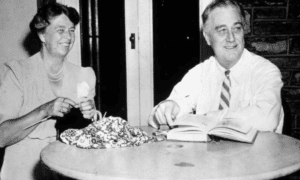

Among the many notable members of the Roosevelt family—a political family hailing from New York—are two presidents of the United States, a first lady, and a slew of businesspeople, legislators, artists, priests, and socialites.
The descendants of a Dutchman who moved to New Amsterdam in the middle of the 17th century intermarried with other prominent colonial families and became influential politicians and businesspeople in New York State and the city.
Franklin D. Roosevelt (1933–1945), whose wife, First Lady Eleanor Roosevelt, was Theodore’s niece, and Theodore Roosevelt (1901–1909) were two members of a distantly related branch of the Roosevelt family from Hyde Park and Oyster Bay, New York, who came to international political prominence during their terms as president.
Along with the Adams, Bush, and Harrison families, the Roosevelts are one of just four to have two presidents with the same surname.
The Past
The Roosevelt family’s immigrant ancestor, Claes Maartenszen van Rosenvelt (c. 1626–1659), landed in New Amsterdam (New York City) between 1638 and 1649. In what is now Midtown Manhattan, including the site of the Empire State Building, he purchased a farm from Lambert van Valckenburgh in 1652.
The farm had 24 morgens, or 20.44 ha, or 50.51 acres. Boundaries of the land were 29th Street and 35th Street, which is today the region between Lexington Avenue and Fifth Avenue.
The first person to use the name Roosevelt and to occupy a political office as an alderman was Nicholas van Rosenvelt, the son of Claes van Rosenvelt. Oyster Bay and Hyde Park families can trace their ancestry to his sons Johannes and Jacobus.
Towards the end of the nineteenth century, the Roosevelt families of Hyde Park and Oyster Bay were commonly thought of as belonging to different political factions.
Eleanor Roosevelt’s uncle, President Theodore Roosevelt, was an Oyster Bay Roosevelt. Eleanor went on to marry Franklin Roosevelt. The family’s two branches stayed close even though members actively campaigned against each other due to political differences.
Roosevelt Family Arms
Into use since the 17th century
The peak is on a torse gules and argent, and for each pale gules and argent, there are three plumes of an ostrich. the third
Protection from harm, represented by an argent rose bush holding three flowers atop a grassy mound. Properly gules, barbed and seeded. It is said that “He who planted us will care for us” (Motto Qui plantavit).
Supplemental components: The mantling, doubled argent, and gules were placed. the third
“Roosevelt” means “rose field” in Dutch. Hence, including a rose bush in Roosevelt’s arms is a nod to their canting origins.
One common and long-standing practice in heraldry is using “canting arms,” graphic representations of surnames. After all, the word Rosenvelt means “rose field”—so it’s not surprising that many Roosevelt families, even those unrelated, would embrace roses. Green fields or mounds covered in grass would also be recognisable features.
In the shield of arms of the Van Roosevelt family of Oud-Vossemeer, Zeeland, a red lion rampant occupies the lower part, while three white roses form a white chevron on top. Per fess vert, a chevron between three flowers argent and a lion rampant gules would be a conventional blazon suggested.
The coat of arms of the namesakes of the American political family that included Theodore and Franklin D. Roosevelt, who was descended from the Dutch immigrant Claes van Rosenvelt, was white and consisted of three ostrich feathers, one red and one white, with a rosebush bearing three, rose blossoms atop a grassy mound.
This might be characterised in heraldic words as follows: On a grassy mound, a rose bush is displayed properly bearing three rose gules, barbed and seeded, all properly. A crest depicts three ostrich plumes per pale gules and argent on a torse argent and gules.
The blazon of Franklin Roosevelt’s shield was changed from Three roses, one in pale and two in saltire gules barbed seeded, slipped and left proper to Three crossed roses on their stems when he removed the rosebush from his arms.
-
The House of Vanderbilt
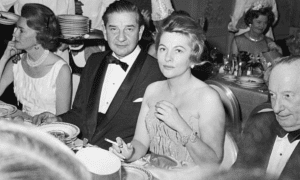

The Vanderbilt family is a prominent American family that rose to prominence during the Gilded Age. After finding success through Cornelius Vanderbilt’s shipping and railroad empires, the Vanderbilt family branched out into other fields of business and philanthropy.
The heirs of Cornelius Vanderbilt proceeded to construct other magnificent residences, including Fifth Avenue mansions in New York City, rich “summer cottages” in Newport, Rhode Island, and the colossal Biltmore House in Asheville, North Carolina, among others. Elm Court (Lenox and Stockbridge, Massachusetts) is one of several Berkshire cottages constructed by the family in western Massachusetts.
At one point in time, the Vanderbilts were America’s wealthiest family. With his passing in 1877, Cornelius Vanderbilt surpassed all Americans regarding wealth. William Henry Vanderbilt became the most affluent American when he inherited his father’s money and remained so until he died in 1885.
What has been called the “Fall of the House of Vanderbilt” occurred in the middle of the twentieth century, when the ten grand Fifth Avenue mansions owned by the Vanderbilt family were demolished, and the majority of the other Vanderbilt houses were sold or converted into museums.
Family members can be traced back to the East Coast of the USA. Actor Timothy Olyphant, musician John P. Hammond, filmmaker James Vanderbilt, art historian John Wilmerding of the United States, journalist Anderson Cooper (the son of Gloria Vanderbilt), and the Duke of Marlborough James Spencer-Churchill are all contemporary descendants.
The past
The wealthy Vanderbilt family can trace their roots back to Cornelius Vanderbilt.
Aertson, also known as Jan Aertszoon, was a farmer from the Dutch village of De Bilt near Utrecht. Near 1650, he came to the Dutch colony of New Netherland as an indentured servant to the Van Kouwenhoven family.
Jan was the ancestor of the Vanderbilt family. The third before the English colonised New Amsterdam (modern-day Manhattan), the name “Vanderbilt” was “Van der Bilt,” which was formed by adding the genitive case of Jan’s hamlet to the Dutch “van” (“from”). The aristocrat Van der Bilt of the Netherlands is linked to the family.
His great-great-grandson, Cornelius Vanderbilt, initiated the emergence of the Vanderbilt dynasty. He came from a humble household on Staten Island; he was the fourth of nine children.
Anthony Janszoon van Salee and Jan Janszoon, president of the Republic of Salé, are his ancestors via his paternal great-great-grandmother Abigail Southard. They arrived in New Amsterdam in the 17th century among the first settlers.
His mother was of Berber descent from Cartagena in the Kingdom of Murcia, and some texts from that era describe Anthony as having a tawny complexion. After abandoning school at eleven and establishing an empire based on railroads and shipping, Cornelius Vanderbilt became one of the world’s wealthiest men in the 19th century.
He gained the nickname “Commodore”—a term for a small task force captain in the United States Navy—for his enthusiasm and drive as he expanded his fleet from one boat to a rivalry with Robert Fulton to control the New York canals.
Fulton’s business now completely controlled the port of New York Harbor. Being based in New Jersey then, Vanderbilt disregarded the law by repeatedly entering and leaving the harbour while flying the banner that proclaimed, “New Jersey Must Be Free!”
After retaining the services of attorney Daniel Webster, Vanderbilt took his case to the US Supreme Court, where it was ultimately successful, setting a precedent for the first US laws governing interstate commerce.
Cornelius Vanderbilt was a Moravian Christian until he died, even though many of his relatives had become Episcopalians.
Commodore William Vanderbilt moved his family from Staten Island to Washington Place (in modern-day Greenwich Village) in the middle of the 18th century.
His family members would utilise their riches to construct spectacular estates, even though he always lived in a modest home. In 1877, just before he passed away, Vanderbilt gave $1 million (about $29 million in 2023 dollars) to help build Vanderbilt University in Nashville.
William Henry Vanderbilt, the Commodore’s eldest son, received the most of his immense wealth. William Henry, who lived only eight years longer than his father, doubled the Vanderbilt fortune, expanded the New York Central Railroad’s reach, and made his father’s enterprises more profitable.
Only he could continue the family business and grow the Vanderbilt fortune.640 Fifth Avenue was the site of his first of several magnificent Vanderbilt residences. Cornelius Vanderbilt II, William Henry’s first son, was named “Head of House” by his father.
At 1 West 57th Street, Cornelius II constructed the most expansive private residence in New York City, with about 154 rooms, according to the plans drawn out by George B. Post. Additionally, he constructed Newport, Rhode Island’s The Breakers.
William Kissam Vanderbilt, the brother of Cornelius II, was also an essential figure in the Vanderbilt family’s affairs. In addition to being one of the Gilded Age’s great architectural benefactors, he constructed a Fifth Avenue residence.
He hired architects for the third and last Grand Central Terminal, which still stands today. Marble House, located at 596 Bellevue Avenue in Newport, Rhode Island, was also constructed by him.
Architect Richard Morris Hunt and landscape architect Frederick Law Olmsted were engaged by George Washington Vanderbilt II, the third and youngest son of William Henry Vanderbilt and the youngest brother of Cornelius II, to build the Biltmore Estate on 125,000 acres (51,000 ha) close to Asheville, North Carolina.
The most prominent house in the US is a 250-room mansion with a floor space of 175,856 sq ft (16,337.6 m2).
Different members of Cornelius Vanderbilt’s family rose to prominence for various reasons; some were successful businesspeople, while others:
- Alfred Gwynne Vanderbilt (1877–1915) was among those who perished with the RMS Lusitania.
- William Henry Vanderbilt III was the governor of Rhode Island. He was Alfred’s eldest son from his first marriage.
- Alfred Jr., Alfred’s second son, had a successful horse breeding and racing career.
- Harold Stirling Vanderbilt (1884–1970), the son of William Kissam Vanderbilt, became famous for his athletic exploits. He was the first to use a contract bridge and won the America’s Cup three times, yacht racing’s highest honour.
- Williams Kissam “Willie K” Vanderbilt II, Harold’s brother, established the Vanderbilt Cup as a racing competition.
- Gloria Vanderbilt (1924–2019), granddaughter of Cornelius Vanderbilt II, was an accomplished artist, fashion designer, actress, writer, and entrepreneur.
- A journalist, author, TV producer, and celebrity, Anderson Cooper, the son of Gloria, has won both the Peabody and Emmy awards.
- Gertrude Vanderbilt Whitney was the daughter of Cornelius Vanderbilt II and a patron, collector, and artist.
- In 1855, New Dorp Moravian Church and Cemetery on Staten Island, New York, received 45 acres (18 ha) of land from Commodore Cornelius Vanderbilt. His son, William Henry Vanderbilt, Jr., later gave him an additional four acres (1.6 ha).
- Architect Richard Morris Hunt and landscape architect Frederick Law Olmsted collaborated in 1885 to create the Vanderbilt Family Mausoleum.
5: The Bush Family


A prominent American political family, the Bush have been involved in American politics since the 1950s. Most notably, from 1989 to 1993 and again from 2001 to 2009, under the presidency of George H.W. Bush and George W. Bush, respectively, they were the first family of the United States.
They were also heavily involved in American business, entertainment, sports, and news. They served as the country’s second family during George H. W. Bush’s presidency (1981–1989).
Only the Adams, Roosevelt, and Harrison families have had two presidents with the same surname; the Bushes are the fourth.
Throughout four generations, members of the Bush family have been prominent figures in politics, holding positions such as U.S. senator (Prescott Bush), governor (Jeb Bush and George W. Bush), and president (George H. W. Bush, who had been vice president before, and George W. Bush).
Joe Ellis, an NFL executive, and Billy Bush and Jenna Bush Hager, two well-known television personalities, are also in the family.
The Bush family’s ancestry is largely Anglo-German. The earliest known American ancestor is Samuel Bush, who was born in 1647 to European parents.
The family’s history begins in the 17th century. Swedes are also in their family tree. Based on their ten generations of European ancestry traced back to Swedish farmer Måns Andersson, who went from Gothenburg to New Sweden (Delaware), the Bush family is reportedly highly interested in this, according to the Swedish colonial society.
-
The Walton Family


Since 2001, all three of the most notable living members—Jim, Rob, and Alice Walton—have been in the top twenty of the Forbes 400 list. John (d. 2005) and Helen (d. 2007) were members before they passed away. After her husband, John, passed away, Christy Walton stepped into his position.
Bud and Sam Walton, Walmart’s co-founders, left most of their fortunes to their families. The retail behemoth employs more than 2.2 million people worldwide, making it the biggest private employer in the world and one of the most lucrative businesses in the world.
As of December 2014, the Waltons held a majority stake of 50.8% in Walmart.The Waltons controlled 50.8% of Walmart as of December 2014. The family now holds less than half of the company’s shares after selling off a portion in 2018. The Walton family had a net worth of almost $240 billion in January 2019.
The Walton Family Endowment
Samuel Walton established a nonprofit foundation in 1987. Though it first broadened its program to cover environmental concerns, especially those about water, the Walton Family Foundation eventually shifted its focus to charter schools.
In 2016, Alice and Jim Walton made a $250 million gift to fund the construction of charter school facilities. To help finance the construction or expansion of charter schools, the Walton Family Foundation established the Building Equity Initiative.
In 2016, the foundation announced a $1 billion commitment over five years to increase “educational opportunity” through collaboration with researchers, education reformers, charter school operators, and the like. This initiative was born out of that announcement.
-
The Astor Family
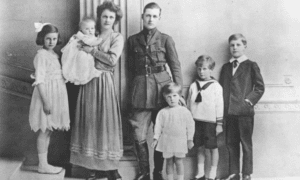

Throughout the nineteenth and twentieth centuries, members of the Astor family rose to positions of power and importance in American and British politics, society, and industry. Originating in Germany, the Astor family traced some of its lineage to the Italian and Swiss Alps. John Jacob Astor, a member of the Astor family and one of the wealthiest men in history, brought the family to North America in the 18th century.
Members of the founding family
- John Jacob Astor was the patriarch of the prosperous Astor family.
- The eldest son of Johann Jacob Astor (1724–1816) and Maria Magdalena vom Berg (1730–1764), John Jacob Astor was christened Johann Jakob Astor. The couple had four sons altogether.
- Ancestry research has revealed that the Astor family can be traced to Gretta Ursula Asdour (1589-?), a descendant of Giovan Asdour (1595-1668). Giovan passed away in Zürich, Switzerland, although he was born in Chiavenna, Italy. The couple’s son, Hans Pieter Asdor, was Swiss-born but passed away in Nußloch.
- In 1778, John Jacob and his brother George departed Germany for London. They set up their shop as flute makers there. The third John Jacob, who had been involved as a dealer in woodwind instruments before moving to New York to deal in opium, furs, pianos, and real estate, departed for Baltimore, Maryland, in 1783, leaving his brother to run the London firm.
- John met Sarah Cox Todd after relocating to New York, and they were married (1762–1842). She was a consultant for her husband’s business and faced accusations of witchcraft following her 1817 success. The charges were never pursued in a court of law. Among their eight children was the real estate magnate William Backhouse Astor Sr. (1792–1875) and son John Jacob Astor Jr. (1791–1869).
- In 1811, the first American settlement on the Pacific coast, Fort Astoria, was founded by John Jacob’s fur trading enterprise as a trading post on the Columbia River. From 1810 to 1812, he founded the Astor Expedition, an overland journey that reached the outpost in the contentious Oregon Country. The English and the Americans staked their territorial claims to the area around Fort Astoria.
- Henry, born Heinrich and immigrated to America with John and George, was likewise born in 1754 and died in 1833. Henry, who had a passion for horse racing, bought Messenger, a thoroughbred who had come to the United States from England in 1788. This particular horse is considered the ancestor of every American Standardbred horse today.
- Melchior, the third brother, stayed in Germany.
- One of America’s most affluent families, the Astors rose to prominence in the 1800s. Several family members settled in England when they rose to prominence at the close of the century. Although the number of American Astors started to fall in the 1900s, their numerous public works, such as the New York Public Library, ensure their legacy will endure. The Viscount Astor and the Baron Astor of Hever are two hereditary peerages held by English descendants of the Astors.
- John Jacob Astor was a lifelong member of a Reformed congregation, unlike many of his relatives who became Episcopalians.
-
The Rich Carnegie Family
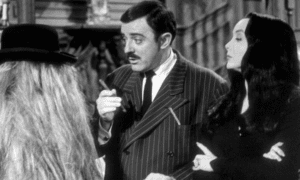

Andrew Carnegie was a Scottish-American businessman and philanthropist who lived from November 25, 1835, until August 11, 1919. Carnegie became one of the wealthiest Americans in history as he spearheaded the growth of the American steel industry in the late 19th century.
He became a prominent philanthropist in the US, the UK, and the British Empire. In his final eighteen years, he distributed over three-quarters of his fortune—about $350 million in 2018 dollars, or $6.5 billion in 2023 dollars—to various organisations and schools.
In his piece titled “The Gospel of Wealth”, published in 1889, he urged the wealthy to donate their money to good causes, argued in favour of progressive taxes and an inheritance tax and inspired a charitable giving frenzy.
In 1848, when Carnegie was twelve years old, he and his parents emigrated from Dunfermline, Scotland, to the area that is now Pittsburgh, Pennsylvania, USA. From his humble beginnings as a telegrapher, Carnegie amassed a fortune that included railroads, sleeper trains, bridges, and oil derricks by the 1860s.
As a bond salesman, he helped American European businesses raise even more money, adding to his wealth. He established the U.S. Steel Corporation out of the Carnegie Steel Company he had constructed in Pittsburgh.
1901, he sold it to J. P. Morgan for $303,450,000, equivalent to $11,113,550,000 today. When he sold Carnegie Steel, he became the wealthiest American of that era, surpassing even John D. Rockefeller.
Carnegie spent the rest of his life engaging in massive philanthropy, particularly in local library construction, global peace, education, and scientific inquiry.
- He established the Carnegie Corporation of New York,
- the Carnegie Endowment for International Peace,
- the Carnegie Institution for Science,
- the Carnegie Hero Fund,
- Carnegie Mellon University,
- and the Carnegie Museums of Pittsburgh.
- He founded Peace Palace in The Hague and Carnegie Hall in New York City.
-
Ford Family


An American family hailing from Michigan, the Fords are a prominent American family. Most notably, they are the ones who today run Henry Ford’s (the man who started the car company) iconic Ford Motor Company in the early 1900s.
The Detroit Lions, an NFL franchise, have been managed by Henry’s grandson William Clay Ford Sr. and his family since the latter half of 1963. The Fords are also devout Episcopalians.
Even though the Ford family’s share in the carmaker had dropped below 50% of the equity by 2010, they continued operational control thanks to a particular class of stock set up early on. They have maintained this control since the company’s 1956 IPO.
The family owns all of the Class B shares. As a whole, they have the right to elect 40% of the board of directors. The publicly traded common stockholders elect the other 60%.
-
A Family Named Adams
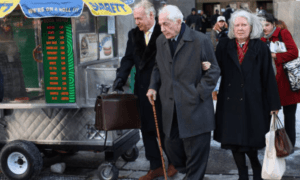

American artist Charles Addams developed the fictional family known as The Addams Family. From 1938 until their creator died in 1988, they were first published in The New Yorker, where approximately half of the 150 freestanding single-panel comics debuted. Later, they found their way into many forms of media, including movies, TV shows, video games, comic books, musicals, and even souvenirs.
The Addamses are a strange, wealthy family who enjoy the macabre and don’t seem to mind that other people find them bizarre or scary. No one knew who was in the family until the 1960s.
The names Morticia, Wednesday, and Gomez were from a licensed doll collection that came out in 1962, while the names Pugsley and Gomez came from the 1964 TV series Uncle Fester[b], Grandmama, their butler Lurch, Pugsley’s pet octopus Aristotle, Wednesday, Pugsley, Morticia and Gomez Addams are all members of the Addams Family.
Introduced in 1954 was the dimly glimpsed Thing, which was eventually transformed into a disembodied hand. In 1964 came Gomez’s cousin Itt, Kitty Kat, Morticia’s pet lion, and Cleopatra, Morticia’s carnivorous plant. In the 1993 film Addams Family Values, Pubert Addams was introduced as Wednesday and Pugsley’s baby sibling.
The two-season live-action TV show debuted on ABC on Friday, September 18, 1964. Other cast members made cameo appearances in later telefilms, including 1977’s Halloween. In 1973, an unrelated cartoon series ran on television.
The Addams Family(1991) and Addams Family Values(1992) were the feature films that brought the brand back in the 1990s (1993). The movies sparked a second animated series (1992–1993) that continued the story in the same made-up world.
An original live-action TV series and a 1998 direct-to-video film served as a reboot for the series (1998–1999). Despite opening to mixed reviews on Broadway in 2010, the live musical adaption starring Nathan Lane and Bebe Neuwirth received eight Drama Desk Award nominations, including one for Outstanding Set Design and two Tony Award nominations.
The animated feature The Addams Family revived the series again in 2019 and a sequel was released in 2021. Wednesday, a spin-off from the original 1964 series, premiered on Netflix in 2022.
Based on its Grammy-nominated theme song, the franchise has produced various media, including video games, academic books, and soundtracks. The Addams Family has been an American cultural touchstone for eight decades, impacting American film, television, and comic books. It has also impacted the goth subculture and its fashion.
Are you searching for biographies of famous and robust people? Then you are in the right place. Click on blogkingworld.com for more highly informative and helpful articles, sign up for our newsletter for free, follow me on LinkedIn, and please like and share it with your friends and family. Also, please comment for further guidance; thanks for your precious time.




